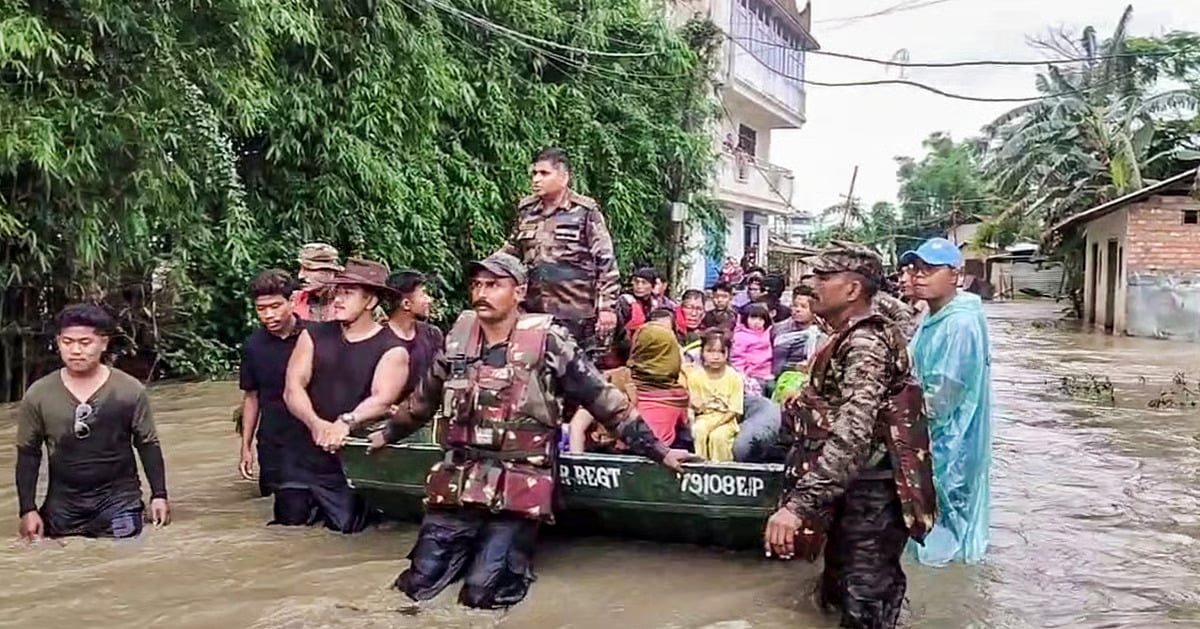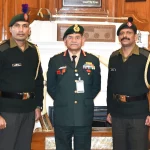The Indian Army has launched extensive rescue and relief operations under Operation Jal Rahat 2, responding to devastating floods and landslides caused by heavy monsoon rains in Himachal Pradesh and the North East. Army columns have been deployed across multiple disaster-affected areas, delivering critical aid and evacuating stranded civilians.
In Himachal Pradesh, the Army has mobilised its forces in Mandi district, one of the worst-hit regions where flash floods and landslides have cut off entire villages. Relief teams are actively operating in Thunag, Bagsiad, and Pandoh, working in coordination with the State Disaster Response Force, National Disaster Response Force, and local authorities. On July 6, Army personnel successfully cleared a vital mule track between Bagsiad and Thunag, restoring access to remote villages and enabling the supply of food, medicine, and essential relief kits.
Medical camps have been established in Thunag, where Army medical teams are providing essential healthcare services. Relief supplies have reached previously inaccessible villages including Degi, Rushad, and Chapad. Aid arrived in Degi on July 7, in Rushad on July 8, and in Chapad on July 9, marking significant progress in the ongoing operation.
Communication remains a major hurdle in remote regions, especially in Thunag where mobile networks are unavailable. To maintain operational effectiveness, the Army has deployed satellite-based communication systems such as ISAT phones and HX terminals to ensure real-time coordination with civil authorities.
In a significant development, the Chief Minister of Himachal Pradesh is scheduled to visit Thunag to assess the ground situation and interact with both relief workers and affected residents. At the same time, the Brigade Commander overseeing the Army’s relief efforts will visit Mandi to evaluate operations and discuss strategic coordination with the Chief Minister and Deputy Commissioner.
In the North East, Operation Jal Rahat 2 is being spearheaded by Headquarters Inspector General Assam Rifles (North), covering flood-affected regions in Nagaland, Assam, and Manipur. On July 10, the Deputy Commissioner of Dimapur formally requisitioned Army assistance after floods submerged Singrijan Colony in Nagaland. In response, an Engineer Task Force was promptly deployed and began relief operations. Although civil authorities later issued a verbal de-requisition, Army teams remain on high alert and fully prepared for further deployment.
In Assam’s Golaghat district, the Dhansiri River crossed its danger mark earlier in the week. While water levels are now receding, Army personnel continue to monitor the region and remain ready to act at short notice. In Manipur, floodwaters from the Nambol River have affected parts of Imphal West and Bishnupur districts. Army teams have been actively engaged in evacuating residents and providing food and medical aid.
As of July 10, a total of 40 Army relief columns have been deployed across the North East, including 24 active columns and 16 in reserve. These teams have rescued more than 3,820 people, distributed over 1,361 food packets, provided medical assistance to more than 2,000 individuals, and delivered nearly 15,500 bottles of clean drinking water.
The Indian Army’s timely and coordinated response has been critical in preventing further loss of life and alleviating suffering in flood-hit communities. Their swift deployment and dedication underscore the Army’s dual role as both a military force and a humanitarian lifeline in times of crisis.
Senior defence officials reaffirmed the Army’s unwavering commitment to the people. “We are here to serve, always—whether in war or in disaster,” said one officer. “From mountain passes to floodplains, our mission remains the same: to protect and assist our fellow citizens.”
As climate-related disasters grow more frequent and intense, the Indian Army’s capacity for rapid, disciplined, and effective humanitarian response continues to set a national benchmark in disaster relief operations.













